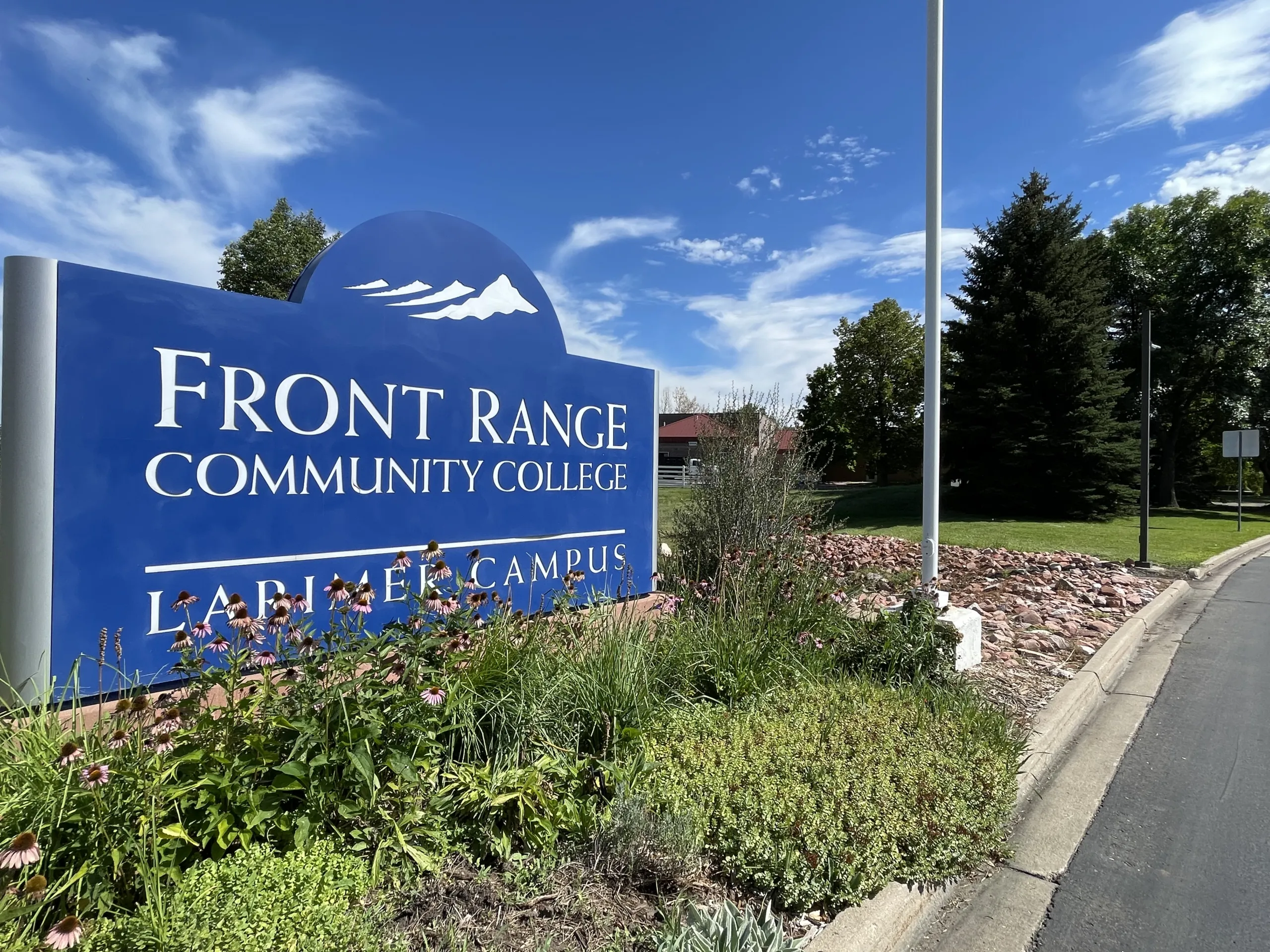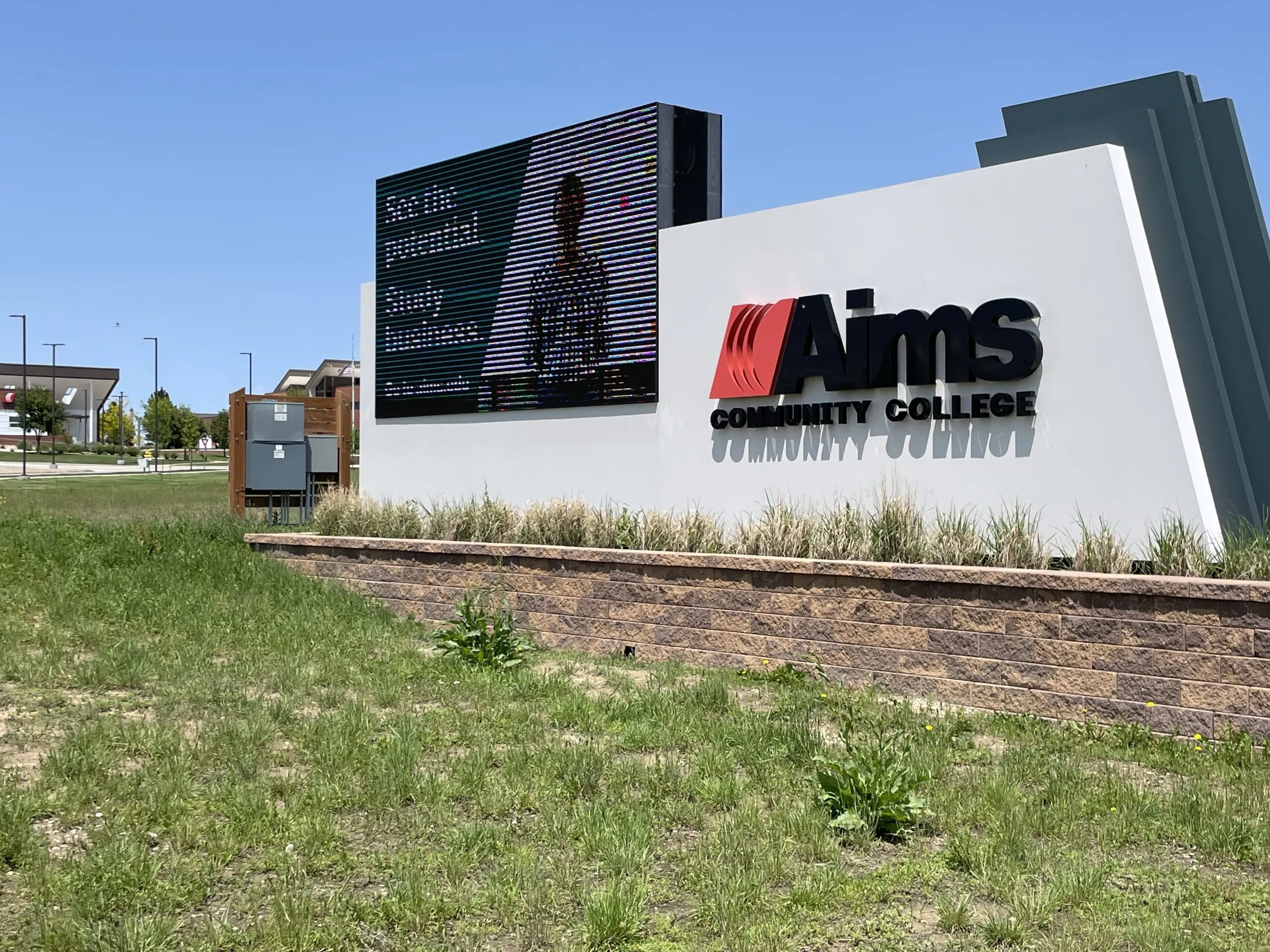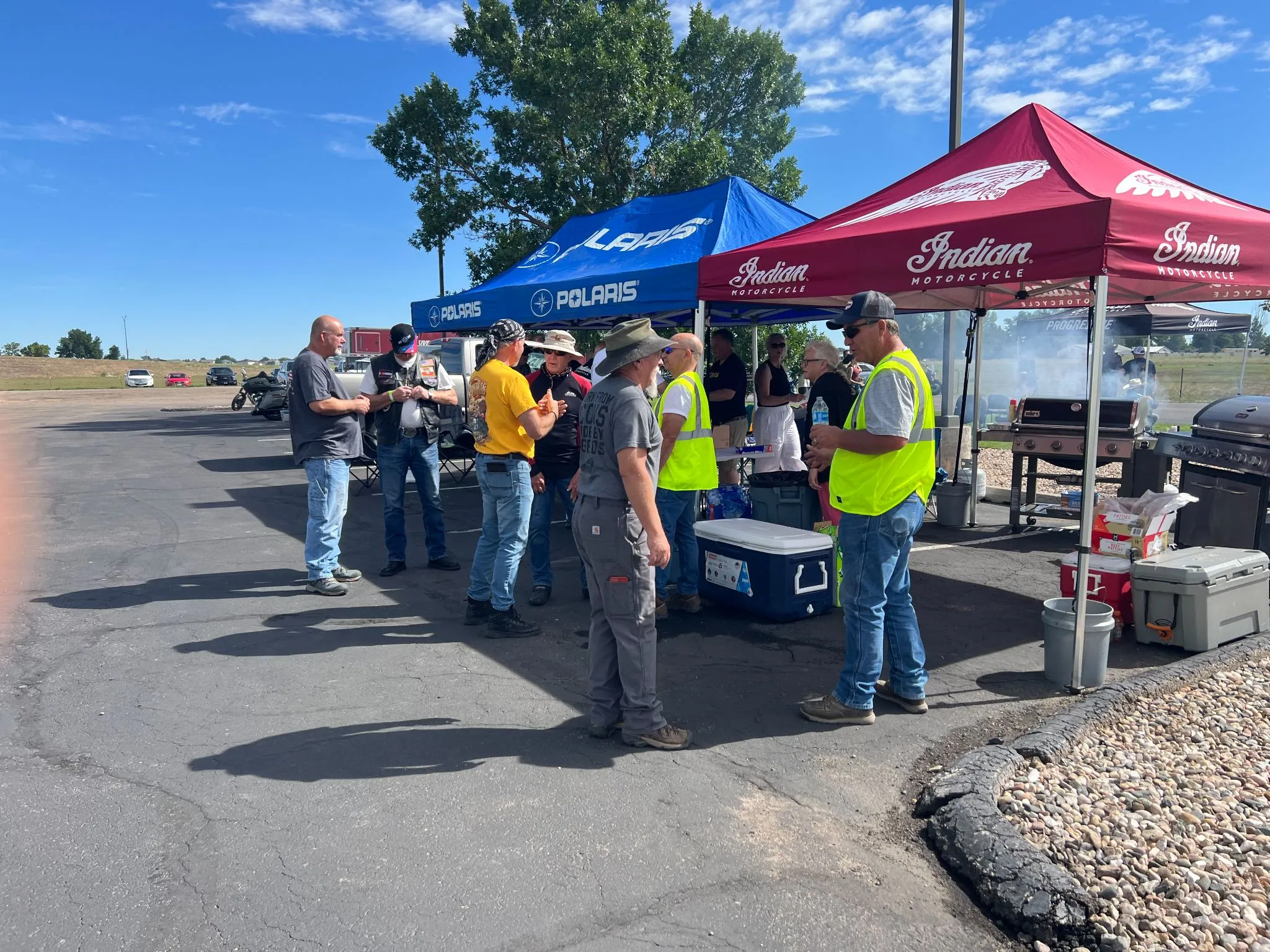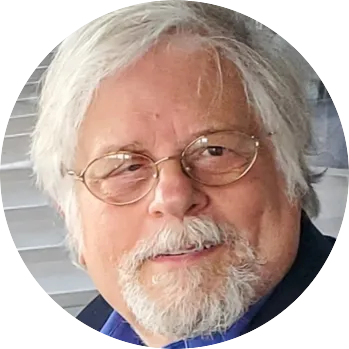CSU Spur nears completion near Stock Show complex
University’s expansion designed to spur innovation, creativity
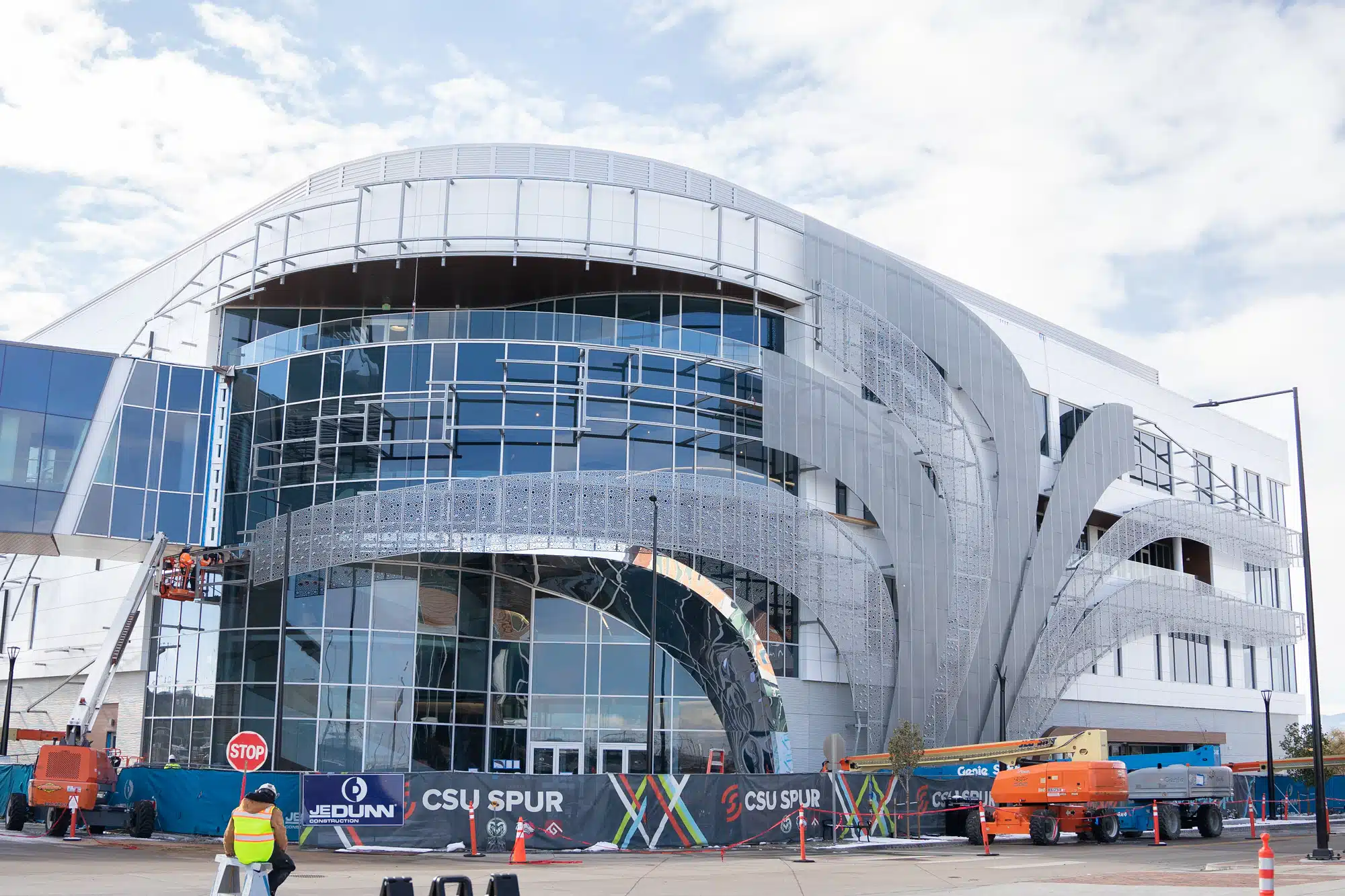
DENVER — According to the Merriam-Webster dictionary, the word “spur” could mean “a goad to action, a stimulus.” It also could refer to “a pointed device secured to a rider’s heel and used to urge on the horse.” And finally, it could describe “a railroad track that branches off from a main line.”
All three definitions come into play at the new CSU Spur campus adjacent to the National Western Stock Show complex in Denver, said Tiana Kennedy, associate vice chancellor for external relations at Colorado State University.
“The name has a little nod to the western heritage of the Stock Show,” she said, “and there’s a railroad track nearby. But mostly it’s meant to be a verb — to spur innovation and creativity, and to spur the next generation.”
SPONSORED CONTENT
That’s the theme of the 300,000-square-foot, three-building campus that will celebrate its completion with a ribbon cutting and public reception on Jan. 6 with the opening of the 122,000-square-foot, water-focused Hydro building.
The first piece, a 114,000-square-foot structure named Vida (Spanish for “life”), opened last January and is geared toward animal and human health. Then in June came the opening of the 60,000-square-foot Terra building, where agriculture and the food it produces are highlighted.
“It is a whole new concept that’s never been done before,” Kennedy said. “We haven’t found anything across the world just like it.”
CSU Spur is essentially a public space, open Monday through Friday, 9 to 5, and from 10 a.m. until 3 p.m. the second Saturday of every month when family-targeted activities will be featured and food trucks will be available. CSU Spur will be open every day during the National Western Stock Show, Jan. 7-22, Kennedy said, “and when people are coming for the Stock Show, it’s just a five-minute walk over to Spur.
“We’ll have rotating programs, so every time you come it’s going to be something new.”
The idea of CSU Spur, she said, “is that we are wanting to invite the public, and in particular the next generation, our K-through-12 students, into these buildings as a way to showcase careers and the topics of food, water and health. We want to have kids connect to these really important world issues as we think about global population booms and finite resources. We need to make sure we’re preparing the future workforce for it.”
Added Jocelyn Hittle, associate vice chancellor of CSU Spur, “that may mean a career as an artist, filmmaker, zookeeper — not just science careers.”
“And we’re also getting diversity of thought and diversity in general into these spaces,” Kennedy said. “How do we inspire these kids to think about careers in food, water and health?”
The admission charge? None.
“The idea is that these are buildings where real science and research take place,” Kennedy said, “but you’ll notice when you come visit that there’s a lot of glass; the theme of this campus is transparency. We’re sort of removing the blinds and letting them actually see what it looks like to be a water scientist or somebody who’s growing food in a greenhouse. You’ll have researchers working, but they’ll be behind glass so visitors can see what it means to be a researcher.”
In the Vida building, “they can see what it means to be a veterinarian,” she said. “We actually have a veterinary hospital on site that is open to the community through the Denver Dumb Friends League, so it’s donor-subsidized access to veterinary care for those who don’t have it.
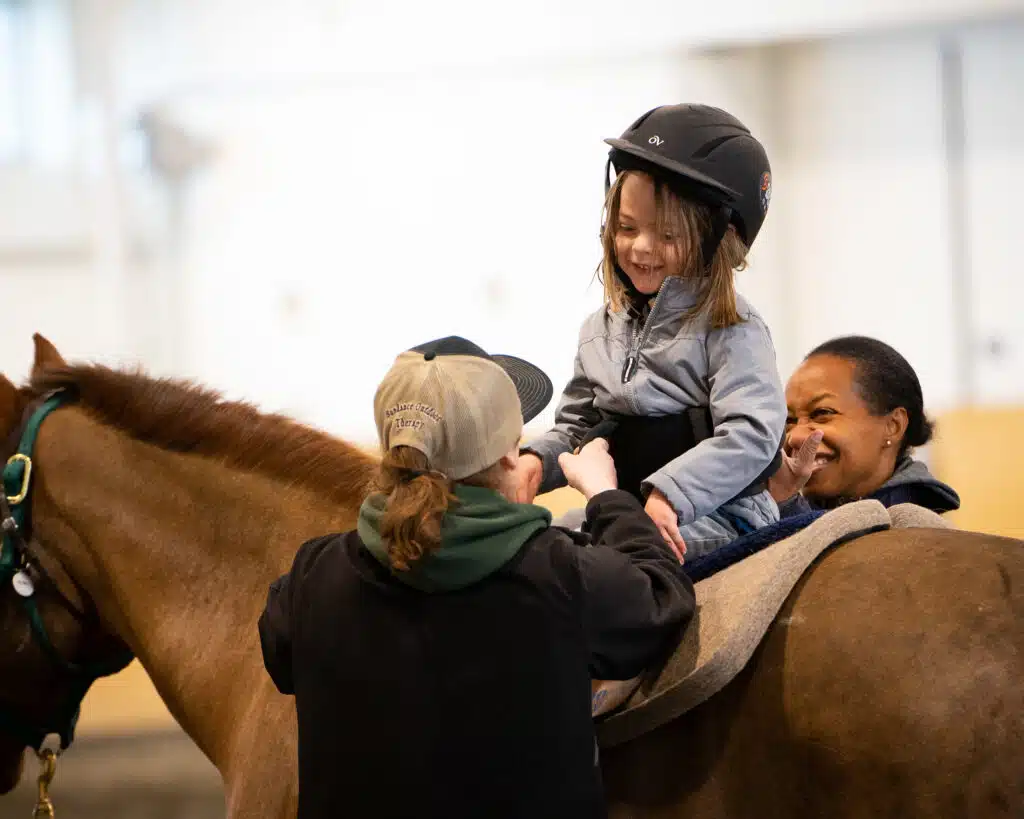
“You’re going to be able to watch dogs and cats undergoing surgery and see the veterinarians at work. Students can even talk to the veterinarians and hear from them while they’re operating on an animal.”
There’s even a hands-on element, where younger children can mimic what it’s like to be a veterinarian “and diagnose stuffed animals and doctor them up,” Kennedy said. “It’s really cute.”
Older students can use virtual-reality goggles to study animal and human anatomy there.
Fifteen horses live on site at the Temple Grandin Equine Center at Vida, which opened in February and was named for a CSU faculty member who is one of the first academics to document the insights she has gained through her autism, has authored scores of scientific papers on animal behavior and is a proponent for the humane treatment of livestock for slaughter.
The horses there assist with therapy for humans, including children on the autism spectrum, and are part of ongoing research, said Adam Daurio, the equine center’s director.
“I get to see some miraculous changes in humans,” he said, relating the story of a 3-year-old “who was pretty much confined to a wheelchair and couldn’t even crawl. The physical therapist put the child on hands and knees on a bareback pad on a horse. It triggered muscle memory — and within six weeks that child started to crawl. Watching a child develop more traditionally and learn to crawl was pretty life-changing for me.
“More nonverbal children that I can even count said their first words on horseback,” he said. “Lung capacity and posture are improved from riding on a horse.”
Added Kennedy, “You might have an 8-year-old who, instead of going through a therapy session in a room with a therapist, they’re sitting on a horse or interacting with a horse or grooming a horse. Horses also have the same gait as humans, so if someone is working on mobility or core strength, doing that therapy exercise on a horse actually physically helps those muscles.”
Daurio said the horses also help adults with occupational therapy, guided by licensed therapists. The center hires or contracts with licensed practitioners, who pay a fee for use of the horses and then the clients or their insurance carriers pay the providers.
An equine sports medicine space there has such devices as underwater treadmills and other therapy modules for horses undergoing conditioning or recovering from injuries.
The mission of the Terra building, Kennedy said, “is to connect people to the food they eat.”
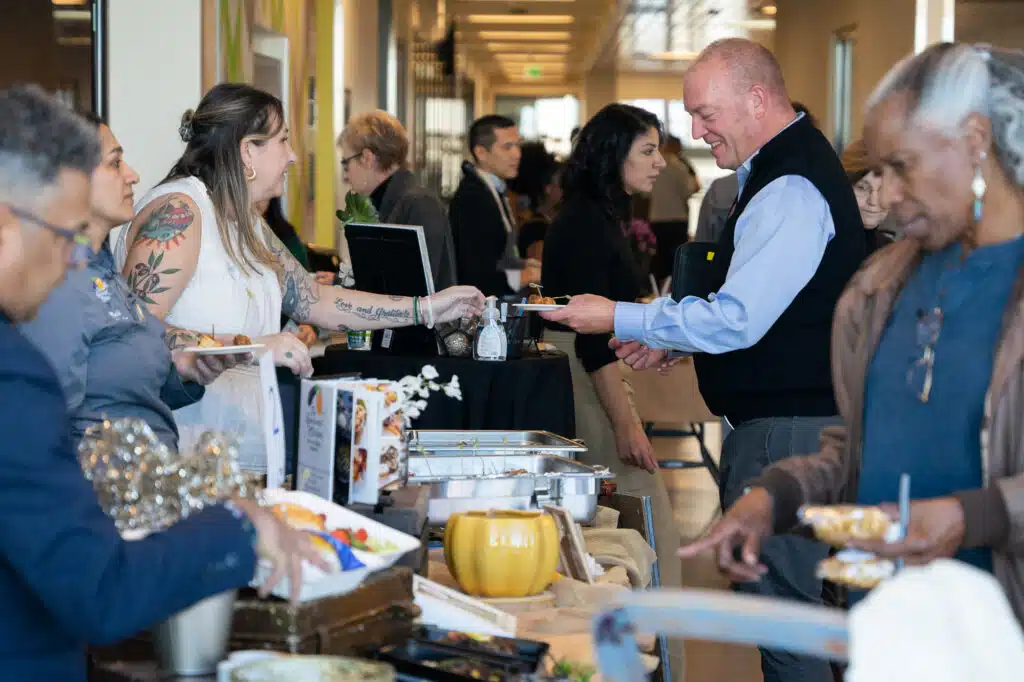
A living wall at the entry holds more than 1,600 plants, and more are grown atop the building in greenhouses and on the roof itself. Nutrition classes are held in Terra, and the public can bring in their ailing plants to a soil and plant diagnostic laboratory, Kennedy said, “if you have a tomato plant that won’t grow or if a farmer has a problem with one of his crops. They can bring in a sample, and our scientists can figure out what’s going on and how to fix it.”
A commercial kitchen and food-innovation lab in Terra allow companies to develop new food products — again, all behind glass so the public can watch them and even sign up to become taste testers.
Food grown in the building is donated to The GrowHaus, a local nonprofit that creates food boxes for area residents in need.
When Hydro opens in January, it will include a cafe where some of the food grown in the Terra building will be served. Denver Water will open a new water-quality lab on the third floor, and a gray-water catchment system will provide water to flush the toilets in the buildings as well as irrigation for plants and foliage in the adjoining “backyard” space that represent vegetation native to Colorado..
That outdoor area also is designed to educate. A central line running through it is intended to represent the Continental Divide and illustrate Colorado’s importance as a headwaters state. Students will be able to walk down to the South Platte River, take a water sample back to the Hydro building and place it under a microscope, learning what it would be like to be a water scientist.
Hydro also will have a flexible theater space and even studio space for artists.
“We want to make sure that we’re talking about these things that’s not just science,” Kennedy said. “We want to make sure everyone knows they can engage in these topics. So if you’re a poet or an artist, there are ways you can be part of this conversation. If you’re a communicator, you can work for a company that’s working on water issues.
“We want to make sure there are lots of entry points for people.”
Hydro also will be the permanent home for CSU’s master’s degree program in agribusiness and food-innovation management as well as an annual Water in the West symposium.
The entire Denver campus is the result of a decade of work by the university’s Fort Collins and Pueblo campuses and CSU Global, Hittle said. “The original concept started back in 2012 when the Stock Show Association was thinking about its future and reached out to its partners to talk about reimagining the complex. How could we make it more of a year-round destination and diversify it? How do we not only celebrate the city’s history but talk about big issues now — the flip side of looking backward?”
A partnership between CSU, the Stock Show, History Colorado and the Denver Museum of Nature and Science was formalized in late 2013, planning for the physical campus began in 2014, and in 2015 the state Legislature approved $250 million toward the project — $200 million for the capital construction and $50 million to the Fort Collins campus to develop Spur planning.
Kansas City-based JE Dunn Construction Group was selected to build CSU Spur’s three buildings.
Philanthropy also has helped fuel the project, including a $3 million gift in June from the Morgridge Family Foundation to support CSU’s College of Agricultural Sciences and educational programming at CSU Spur.
“So it’s not from tuition dollars,” Kennedy said. “This is meant for the public, an investment from the state for the general public” — an investment that even includes school-bus reimbursement for districts that face financial barriers to bringing students to CSU Spur on field trips.
“We’re seeking funding right now to make that sustainable through philanthropic and corporate giving and state and federal grants,” said Kathryn Venzor, CSU Spur’s educational director. “We want to be a well-oiled, self-sustaining program here.”
Planners also have emphasized an outreach to the neighborhoods immediately surrounding the complex including Elyria-Swansea and Globeville, Kennedy said, and students living in the 80216 ZIP code can receive a scholarship of $10,000 toward their college careers.
“We want to make sure that anything we do is something the community wants,” Kennedy said.
CSU students doing research at the Spur campus will “wear two hats,” Hittle said. “They’ll be students, but also communicating what they do to youths and families who are visiting.”
Even though CSU Spur is treated as a nonprofit venture, it can’t hurt that it could lure students to enroll at Colorado State.
“I’m most proud of the experiences we provide for K-through-12 students,” Venzor said. “We are trying to guide them on their career paths, and if it includes CSU, that’s great. If it doesn’t, that’s fine too. This is an industry-wide solution. Finding people for science and technical careers faces extreme challenges. There are a lot of positions, and we need to diversify the people we send to those careers.
“We’re a pretty small team right now,” she said. “We’re a startup, so we’re learning as we grow, as teachers tell us what they need, and what students tell us resonates with them. It’s all hands on deck right now.”
The K-through-12 education team is made up primarily of non-formal educators, she said. “There are just four of us for the entire campus, but we’re doubling our staff as we open the Hydro building. That will let us double the amount of programs, field trips, and opportunities to go out into the community.”
In September, the CSU System announced that 37 projects originating from the university will be located for at least the next year at CSU Spur.
“Already, Spur boasts projects from CSU Engagement and Extension and nearly every CSU college. And we’re just getting started,” said Jim Bradeen, associate vice president for Spur strategy. “We are doubling down on our land-grant promise of life-changing education and world-changing research in new and creative ways. With startup investment from the CSU System, we are launching new initiatives in life-long experiential learning, new career pathways, and new ways to partner with neighborhood groups, nonprofits and industry to advance research.”
Venzor predicted that within five to 10 years, “after learning how having all three buildings work in a comprehensive experience, I see us providing programs for school groups where every grade level is getting something memorable. First-graders come, then as a second-grader they build on experiences they already had, and so on.”
Added Hittle, “We’re at this really exciting moment, transitioning from building to being able to realize the initial programs we envisioned. The real magic is in the programs that will happen inside those buildings. The campus will start with a core set of programs, but it will evolve over time. New ideas have come up in even the last year. I fully anticipate that will continue to happen.
“Five to 10 years from now, it’s hard for us to even envision what will be happening there.”
For now, Venzor said, the staff is most excited about showing off CSU Spur to visitors.
“You get out of it what you put into it,” she said. “It’s immersive. You can run through the campus in 30 minutes or really dive into it for three hours. We’re here to help them go as deep into the content as they’d like to — and spur their enthusiasm.”
DENVER — According to the Merriam-Webster dictionary, the word “spur” could mean “a goad to action, a stimulus.” It also could refer to “a pointed device secured to a rider’s heel and used to urge on the horse.” And finally, it could describe “a railroad track that branches off from a main line.”
All three definitions come into play at the new CSU Spur campus adjacent to the National Western Stock Show complex in Denver, said Tiana Kennedy, associate vice chancellor for external relations at Colorado State University.
“The name has a little nod to the western heritage of the Stock Show,”…

